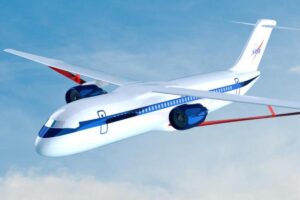Control System Integration with CAN Bus and Modbus
Abstract
This white paper delves into the significant advantages of CAN Bus and Modbus protocols in optimizing connectivity for industrial applications. These communication protocols are integral to enabling seamless device interoperability, efficient communication, and scalable network solutions. We explore their unique features, applications, and how they contribute to modern control system integration.
Introduction
Efficient communication in industrial environments is paramount for productivity and reliability. CAN Bus and Modbus are two protocols that have proven to be indispensable in achieving these goals. This white paper provides a detailed examination of their functionalities and offers insights into how they enhance connectivity in various industrial projects.
Overview of CAN Bus
1.1 Definition and Origin
The Controller Area Network (CAN) Bus, introduced by Bosch in 1986, is a robust vehicle bus standard designed to facilitate microcontroller communication. Initially created for automotive systems, its applications now extend to industrial control, medical equipment, and building automation.
1.2 Core Features
- Reliability: Ensures stable communication even in noisy environments.
- Real-Time Performance: Supports time-critical operations with minimal latency.
- Error Management: Built-in mechanisms to detect and correct transmission errors.
- Decentralized Communication: Enables multiple nodes to communicate without a central controller.
1.3 Common Applications
- Automotive: Powertrain control, safety systems, and diagnostics.
- Industrial Automation: Process monitoring and machine control.
- Healthcare: Patient monitoring systems and infusion pumps.
Overview of Modbus
2.1 Introduction and Evolution
Developed by Modicon in 1979, Modbus has become a standard communication protocol in industrial automation. It facilitates the connection of electronic devices, such as sensors and actuators, with control systems like PLCs.
2.2 Distinctive Features
- Flexibility: Multiple versions, including Modbus RTU, Modbus ASCII, and Modbus TCP/IP, for varied use cases.
- Master-Slave Architecture: Allows a master device to manage multiple slave devices.
- Open Source: Ensures widespread adoption and adaptability.
- Ease of Implementation: Simple design for quick deployment.
2.3 Areas of Use
- Power Systems: Monitoring and management of electrical grids.
- Manufacturing: Equipment integration and production line automation.
- Building Management: Controlling HVAC systems and lighting.
Comparative Analysis of CAN Bus and Modbus
3.1 Architecture
- CAN Bus: Employs a decentralized, message-based system.
- Modbus: Operates on a centralized, master-slave framework.
3.2 Speed and Bandwidth
- CAN Bus: Provides high-speed communication up to 1 Mbps.
- Modbus: Modbus RTU supports up to 115.2 kbps; Modbus TCP/IP depends on Ethernet.
3.3 Error Handling
- CAN Bus: Sophisticated error detection with automatic retransmission.
- Modbus: Basic error checking via CRC.
3.4 Scalability
- CAN Bus: Suited for smaller, closed networks.
- Modbus: Easily extends to large, distributed systems.
Integration of CAN Bus and Modbus
4.1 Need for Integration
Industries often require diverse devices to work cohesively. Integrating CAN Bus and Modbus achieves this by combining their unique strengths to create unified systems.
4.2 Integration Techniques
- Gateways: Translate data frames between the two protocols.
- Bridges: Enable communication across different network segments.
- Embedded Systems: Controllers with dual support for both protocols.
4.3 Advantages
- Interoperability: Facilitates communication between heterogeneous devices.
- Centralized Management: Simplifies monitoring and control.
- Enhanced Flexibility: Enables customized solutions for diverse applications.
4.4 Applications
- Smart Manufacturing: Combining CAN Bus machine networks with Modbus SCADA systems.
- Renewable Energy: Monitoring CAN-based inverters with Modbus energy meters.
- Logistics: Integrating robotic systems with warehouse management tools.
Advanced Applications
5.1 Role in Industrial IoT (IIoT)
The Industrial Internet of Things leverages CAN Bus and Modbus for real-time data exchange and device connectivity. CAN Bus excels in edge computing scenarios, while Modbus provides compatibility with cloud-based systems.
5.2 Predictive Analytics
By collecting data from CAN Bus and Modbus devices, analytics platforms can predict equipment failures and optimize operations, reducing downtime and maintenance costs.
5.3 Energy Management
Integrated systems using these protocols help monitor energy usage, improve efficiency, and reduce wastage in industrial facilities.
Reliable Solutions for Connectivity
6.1 Hardware
- Gateways: Seamlessly link CAN Bus and Modbus networks.
- Industrial Controllers: Offer multi-protocol support for versatile applications.
- Embedded Systems: Compact solutions for protocol integration.
6.2 Software
- Network Configuration Tools: Simplify the setup process.
- Diagnostics Tools: Enable real-time troubleshooting.
- Simulation Software: Aid in system design and testing.
Overcoming Challenges
7.1 Common Issues
- Compatibility: Ensuring devices from different manufacturers work together.
- Latency: Managing delays in large networks.
- Cybersecurity: Protecting communication channels from threats.
7.2 Best Practices
- Standardized Protocols: Ensure compatibility by adhering to standards.
- Network Design: Optimize topology for efficiency and reliability.
- Regular Maintenance: Update software and firmware regularly.
Conclusion
The synergy between CAN Bus and Modbus provides unparalleled benefits in industrial automation. By understanding their features, applications, and integration techniques, industries can enhance communication, device interoperability, and scalability. Implementing reliable solutions and following best practices ensures robust and efficient control systems.





